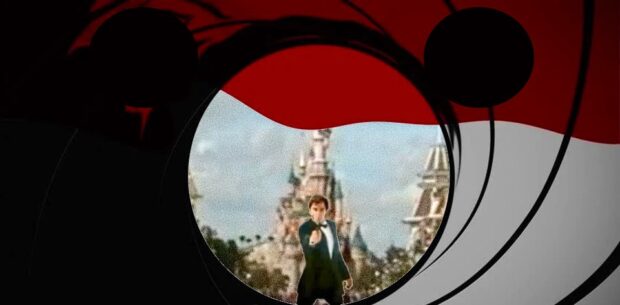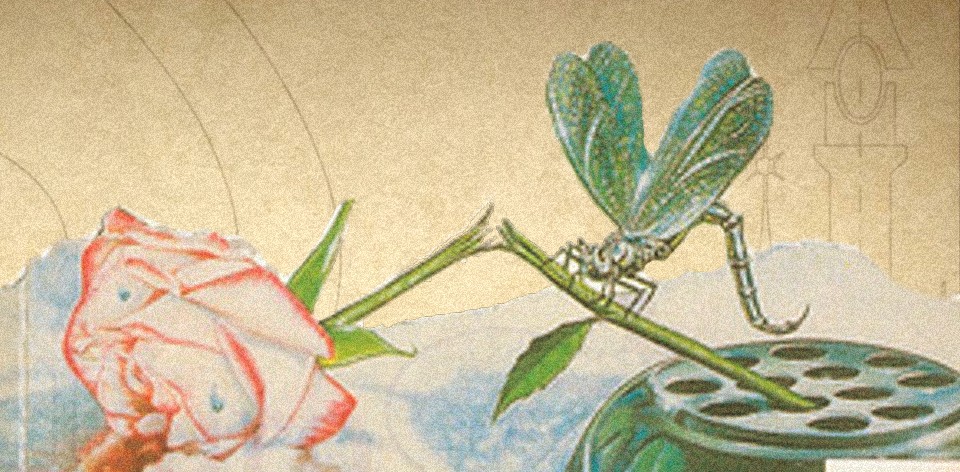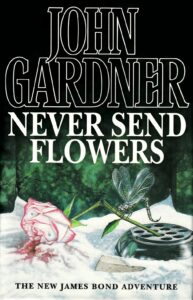Bond. James Bond. In the 007 Case Files, join me as I read all of the James Bond books, encompassing Ian Fleming and beyond. For Your Eyes Only: there’s spoilers ahead.
It’s been a while since I’ve indulged my inner spy with a dash of 007. So, after a couple of heavy books in a row, I had a yen for the kind of story you could finish in a day. This is what John Gardner’s Bond was best at, crafting little potboilers that were just as much for fans of the films as they were continuations of Ian Fleming’s novels.
Originally released in 1993, NEVER SEND FLOWERS was certainly primed to fill the cinematic void between 1989’s Licence to Kill and 1995’s Goldeneye. From the start — in which a series of daring assassinations take place in Rome, London, Paris and Washington — it has all the hallmarks of a thoroughly modern thriller. Yet it is the murder Laura March, a British Security Service agent on leave in Switzerland, that brings Bond into the investigation.
There is no obvious connection to the high-profile targets, and nobody is putting their hand up to claim responsibility. Joining forces with Swiss Intelligence officer Fredricka von Grüsse (who Bond affectionately dubs “Flicka”), the trail leads them to the former stage actor David Dragonpol, now an eccentric collector of theatre memorabilia rattling around in an ornate castle on the Rhine. Yet something isn’t quite right about Dragonpol, if his arch villain name wasn’t enough to tip you off. It might be all those locked doors they keep running up against.

One of the best aspects of NEVER SEND FLOWERS is the initial mystery. Indeed, it plays a bit like a serial killer yarn in the vein of contemporary The Silence of the Lambs, the adaptation of which had won a slew of Academy Awards the year before. Gruesome in parts and clinical in others, it lays the groundwork for a genuine whodunnit that’s a bit of a novelty for Bond. “It’s a good old Victorian novelist’s plot, Mr. Dragonpol,” remarks the spy.
The momentum is lost a bit when Gardner gets into more familiar villain territory. Following yet another excuse from M to go on ‘leave’ from the service — one of Fleming and Gardner’s go-to tricks for cutting Bond loose from bureaucratic obligations — Bond and Flick arrive at a literal castle to meet the would-be villain. To Gardner’s credit, he keeps us guessing for a little bit, throwing out hints that Dragonpol may be the pawn and not the perpetrator. Yet it later turns out that not only has David Dragonpol been hiding a twin brother, but his obsessive streak about his work also comes out as a need to plan difficult murders as a means of gaining satisfaction. The killing itself is almost an afterthought.
So, if in Dragonpol we have one of Gardner’s more intriguing single-serve characters, then Flick is one of his more endearing. Introduced as an equal to Bond, she is written as both a love interest and a capable spy in her own right. It’s quite refreshing for the early 90s, and Gardner clearly knew when he was onto a good thing. By the end of the novel, Flick is dismissed by the Swiss secret service and swooped up by M. Gardner hints at a deepening of their relationship here, even suggesting wedding bells, albeit with Bond momentarily recalling the ill fates of his lost loves. Flick would return in Gardner’s final two Bond novels, SeaFire and COLD.
Getting back to those narrative twists and turns, the whole thing builds up to attempt on Princess Diana’s life in the freshly opened Euro Disneyland (now known as Disneyland Paris). It’s all part of Gardner’s trademark of keeping up with the latest events and happenings around the world, but much of these reads like an infomercial for the park. Indeed, there’s a whole paragraph in which Bond sings the gushing praises of the park, before rattling off all the rides and attractions it has to offer.
“Funny, I went with a girlfriend and we only booked for two nights. I thought the whole thing would be tasteless, tawdry, and a bit phony. In the end we stayed for a week. The great thing about Disneyland is that it works. The moment they walk through those gates and find themselves in the Town Square and Main Street, the visitors know that they’re going to have one hell of a good time. The rides are a knockout, and it does become wonderful.”
Later, Dragonpol’s plan to blow up Diana, by planting explosives on the Mark Twain Riverboat, is foiled when he’s hoisted by his own petard and dies in a fire of his own creation. We’re then reminded of the efficiency of the Disney organisation in putting the fire out before the local authorities arrived. The Internet fails to tell me whether this was genuine praise, a paid promotion, or Gardner’s attempt at furnishing some early sponsored content. Whatever the case, it’s pretty overt.
So, Gardner’s Bond stories are clearly very commercial enterprises at this point, and it constantly surprises me that none of his books have overtly been adapted into films. Product placement notwithstanding, NEVER SEND FLOWERS completely sticks the landing and fulfils its promise of being a capable page-turner.
James Bond will return…in SeaFire.





